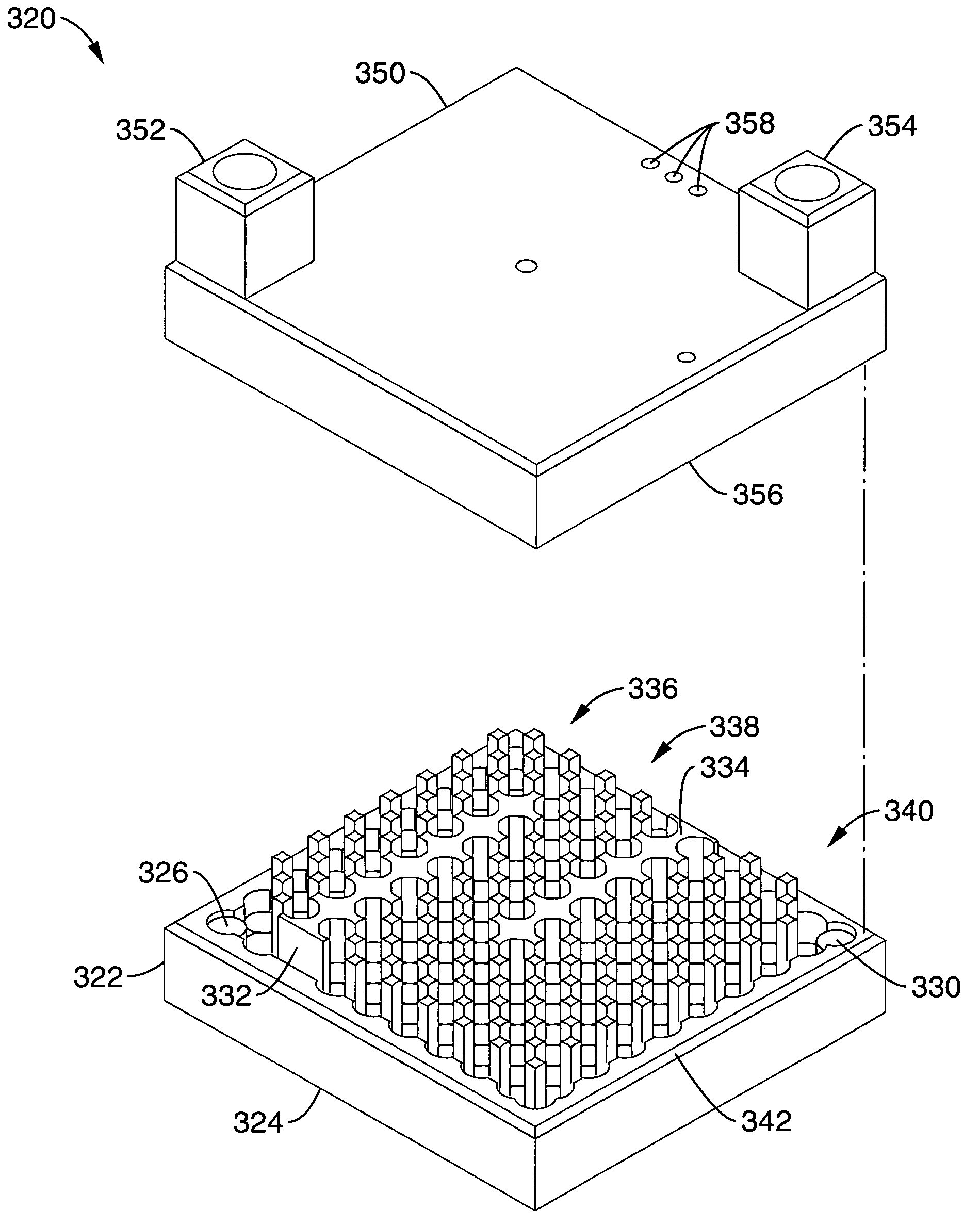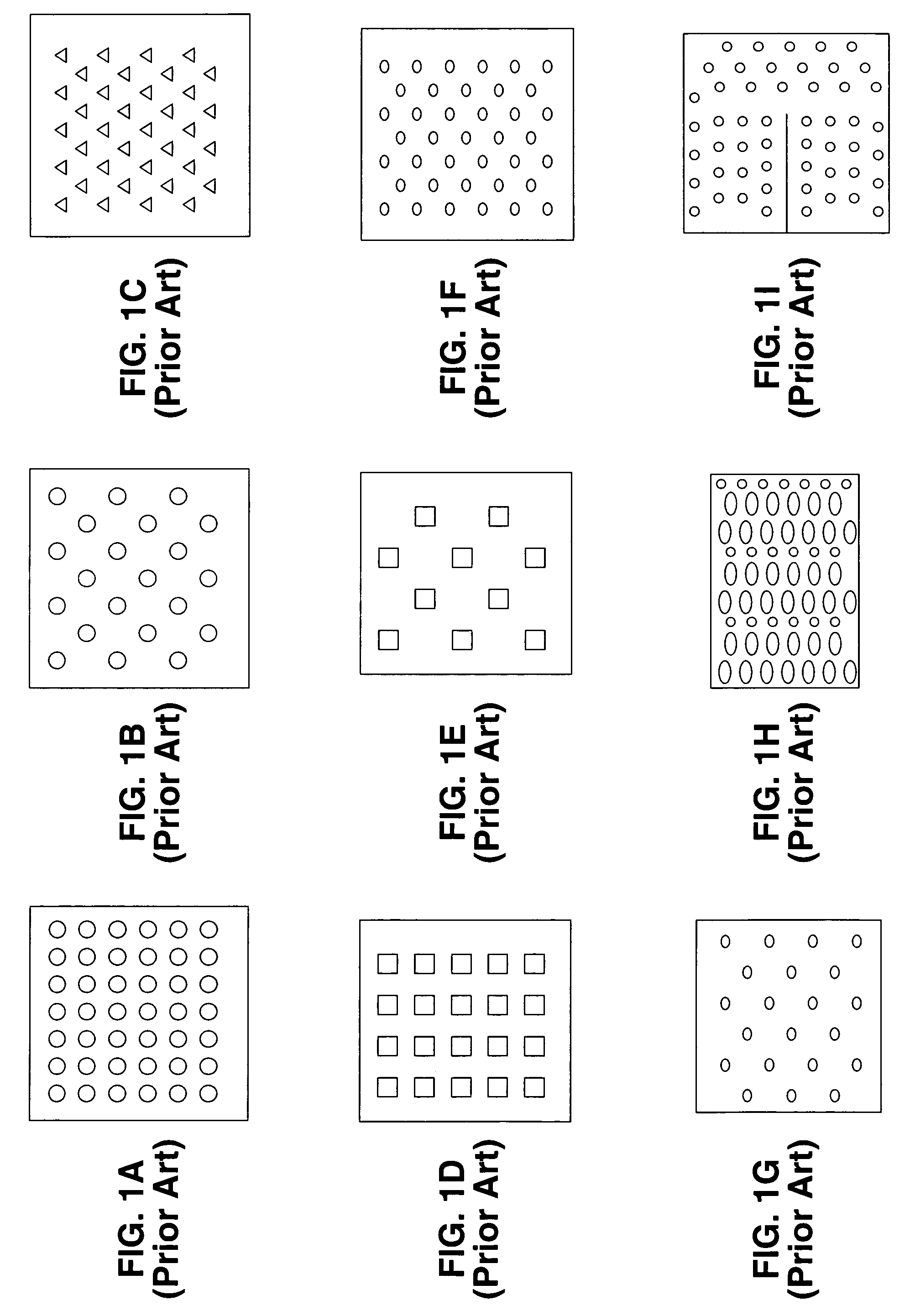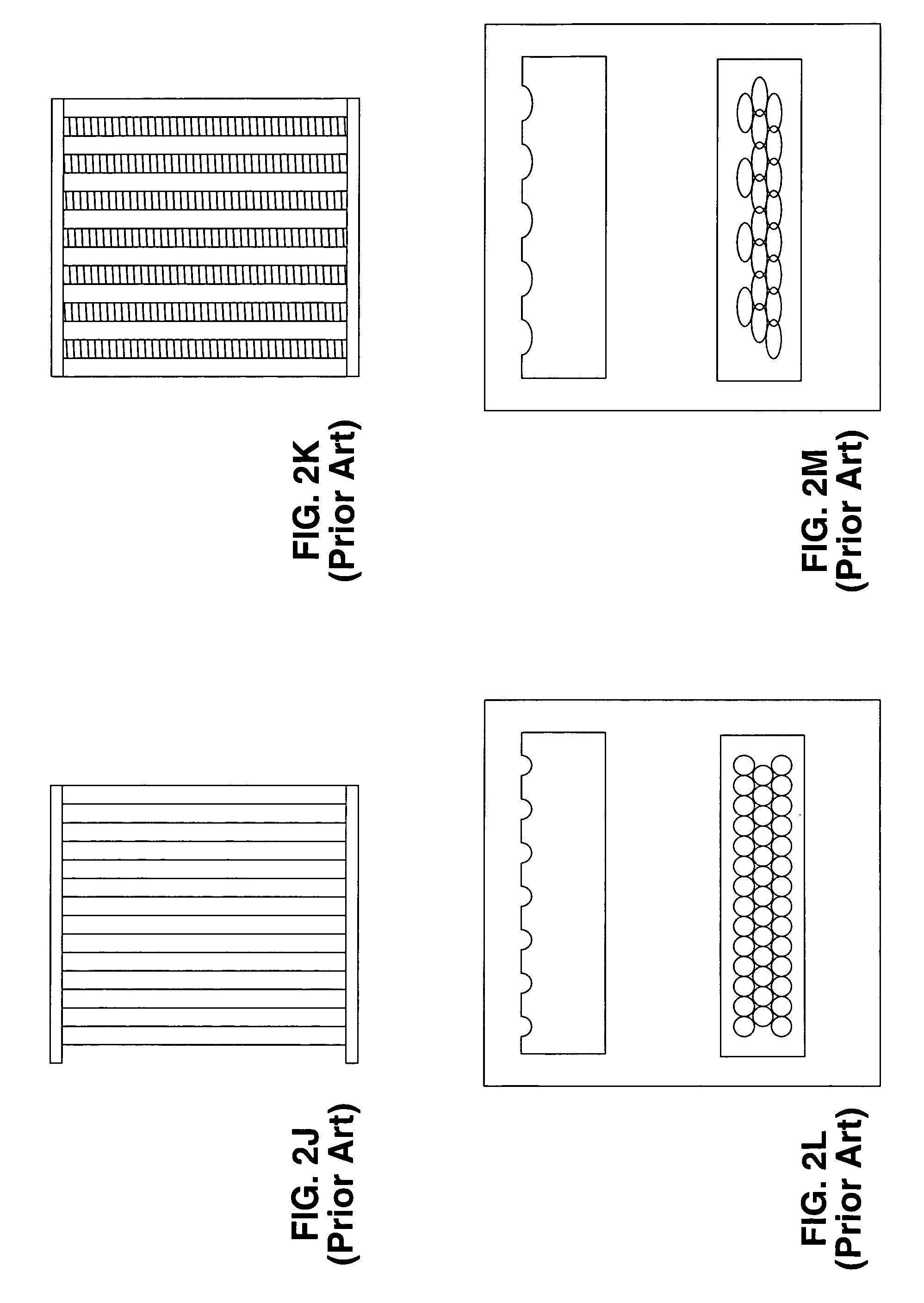Heat dissipating device
a heat exchanger and surface technology, applied in lighting and heating apparatus, electrical apparatus, cooling/ventilation/heating modifications, etc., can solve the problems of reducing efficiency, reducing heat dissipation efficiency, so as to increase the restriction of fluid flow and increase the heat transfer coefficient
- Summary
- Abstract
- Description
- Claims
- Application Information
AI Technical Summary
Benefits of technology
Problems solved by technology
Method used
Image
Examples
Embodiment Construction
[0069]Referring more specifically to the drawings, for illustrative purposes the present invention is embodied in the apparatus generally shown in FIG. 1A through FIG. 17. It will be appreciated that the apparatus may vary as to configuration and as to details of the parts, and that the method may vary as to the specific steps and sequence, without departing from the basic concepts as disclosed herein.
[0070]For liquid heat exchangers, increased surface area at the fluid interface surface and turbulent flow are desired for improved heat transfer. However, turbulent flow restricts fluid flow decreasing overall efficiency. Thus a balance of turbulent flow for heat transfer and laminar flow for fluid flow is desired. A heat transfer surface having pins perpendicular to the flow increases surface area and turbulent flow and is commonly used in a heat dissipating device.
[0071]FIG. 1A through FIG. 1I illustrate top views of pin patterns used for heat dissipating devices in the known art de...
PUM
 Login to View More
Login to View More Abstract
Description
Claims
Application Information
 Login to View More
Login to View More - R&D
- Intellectual Property
- Life Sciences
- Materials
- Tech Scout
- Unparalleled Data Quality
- Higher Quality Content
- 60% Fewer Hallucinations
Browse by: Latest US Patents, China's latest patents, Technical Efficacy Thesaurus, Application Domain, Technology Topic, Popular Technical Reports.
© 2025 PatSnap. All rights reserved.Legal|Privacy policy|Modern Slavery Act Transparency Statement|Sitemap|About US| Contact US: help@patsnap.com



